This year, the United States experienced a wide range of extreme weather events, from prolonged cold spells and wild windstorms to rapidly intensifying hurricanes and record-setting heat waves. These events have already tested the resilience of our power grids. Among all regions, ERCOT has arguably faced the most challenges so far.
ERCOT was hit by the MLK weekend freeze, a May windstorm that left a million households without power, scorching summer heat, and most recently, a landfalling Category 1 hurricane. While other regions were also impacted by severe weather, ERCOT's experiences have been especially intense — and it is only July. These weather events highlight the critical need for accurate demand forecasts and stress testing to prepare for worst-case scenarios during extreme heat events.

Amperon's Advanced Weather Scenarios let our customers dive deeper into our demand forecasts and conduct extensive weather scenario analysis, aiding in making more informed trading decisions when extreme weather events are on the horizon. Customers can access individual demand forecasts based on weather predictions from AG2, DTN, NWS’ NBM, and SPIRE (for ERCOT), ensuring a diverse set of demand forecasts in their profile. Additionally, customers can adjust weather scenarios up to two weeks out by modifying temperatures by ±1, 3, 5,10, and 15 degrees to explore the worst- or best-case scenarios. The one-to-two-week range is when the meteorological models show the most variability, making the two-week scenarios very beneficial for managing forecast risks.

Above, you can see the different demand forecasts based on changes by ±5 and 15 degrees.
Amperon Advanced Weather Scenarios would have been particularly beneficial on a day like May 13th in ERCOT. On this day, much of east Texas, especially the Houston region, was under a severe weather threat. Afternoon thunderstorms caused temperatures to be about 10 degrees cooler than originally forecasted, leading to a significant weather miss and weakened demand.
By toggling on the Weather Actuals (which shows our forecasts based on the actual weather data instead of the day-ahead prediction), we see this was a weather forecast miss, as the Absolute Percentage Error is under 1%. The Advanced Weather Scenarios would have allowed clients to stress test for this day two weeks in advance. If clients thought the weather forecast was too hot, they could have adjusted the forecasted temperature down by 10 degrees to align the Amperon demand forecast with the possibility of afternoon thunderstorms.
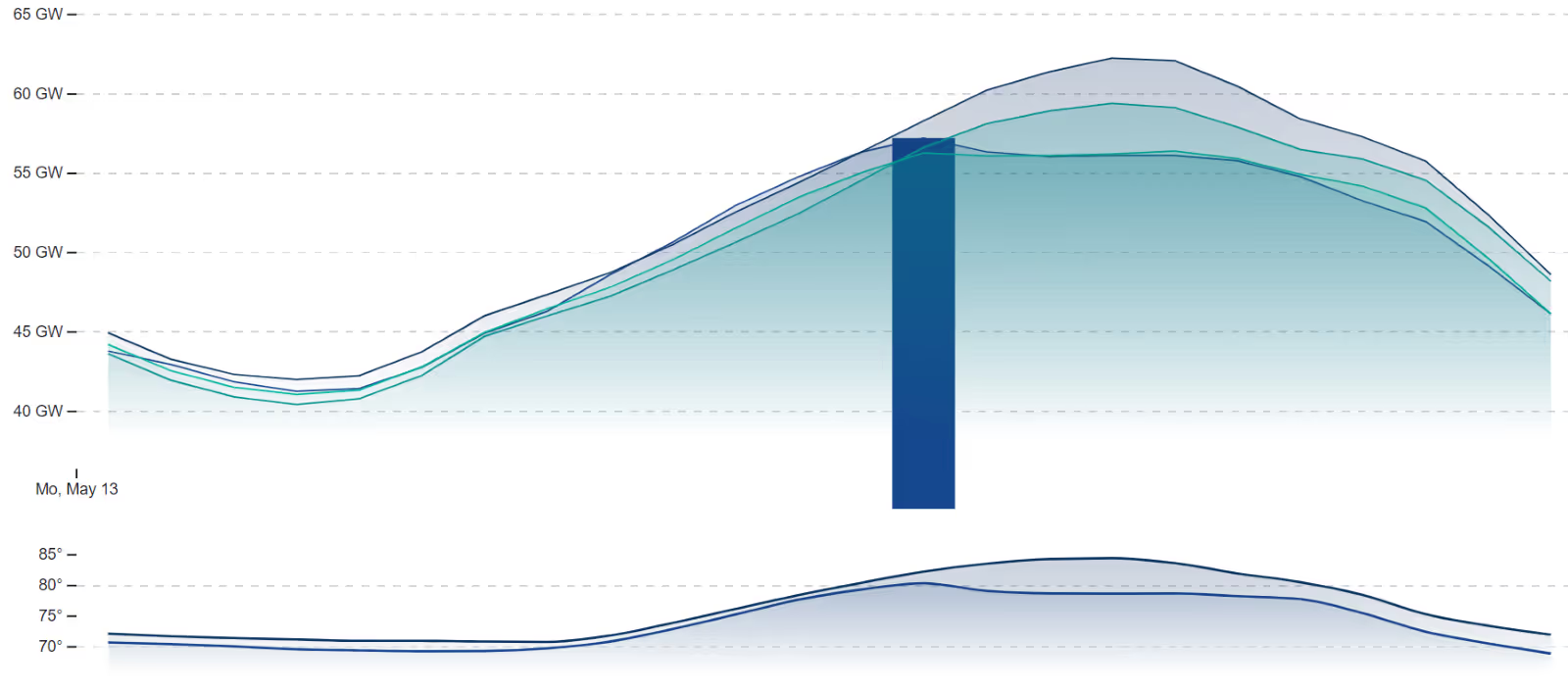
Here, you can see demand peaked earlier at HE16 (top chart) due to temps dropping much lower than expected most likely due to an afternoon thunderstorm (bottom chart).

Here you can see how the much lower afternoon temperatures caused demand to stay relatively flat.
On May 13th, day-ahead prices cleared at $381.64 at HE20 due to anticipated hot temperatures, weaker wind generation after sundown, and ongoing outage season in the region. However, since demand peaked earlier in the day and temperatures were much lower than forecasted, the real-time prices settled at $90.20 for ERCOT_RTO during the expected peak demand hour.
More Extreme Weather To Come
The recent heatwaves in PJM and CAISO set record-breaking temperatures. PJM issued numerous Hot Weather Alerts due to widespread heat causing grid stress. According to the EIA, PJM’s peak demand during the mid-June heatwave was 19% higher than the June 2023 peak demand, reaching 147,976 MW. This demand peak is already nearing PJM’s 2024 expected summer outlook of 151,000 MW. In CAISO, temperatures soared to 127 degrees in Death Valley, nearing record highs, with inland temperatures 15 degrees above the 30-year average. This has led to the first demand days over 40 GW for CAISO this summer, with more expected.
By utilizing Amperon’s Advanced Weather Scenarios, these situation could have been anticipated two weeks in advance. Testing our demand models for a weaker demand peak due to lower temperatures would have saved traders hundreds of dollars by indicating that DARTS would be extremely positive during the typically most volatile time of the day.
Contact us today to subscribe to the Advanced Weather Scenarios as part of your grid demand short-term forecast and stay prepared for the next big weather event.



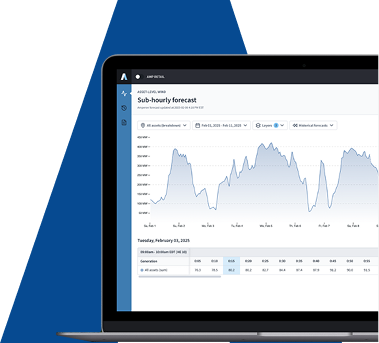
.svg)




%20(3).png)
%20(2).png)
%20(1).png)






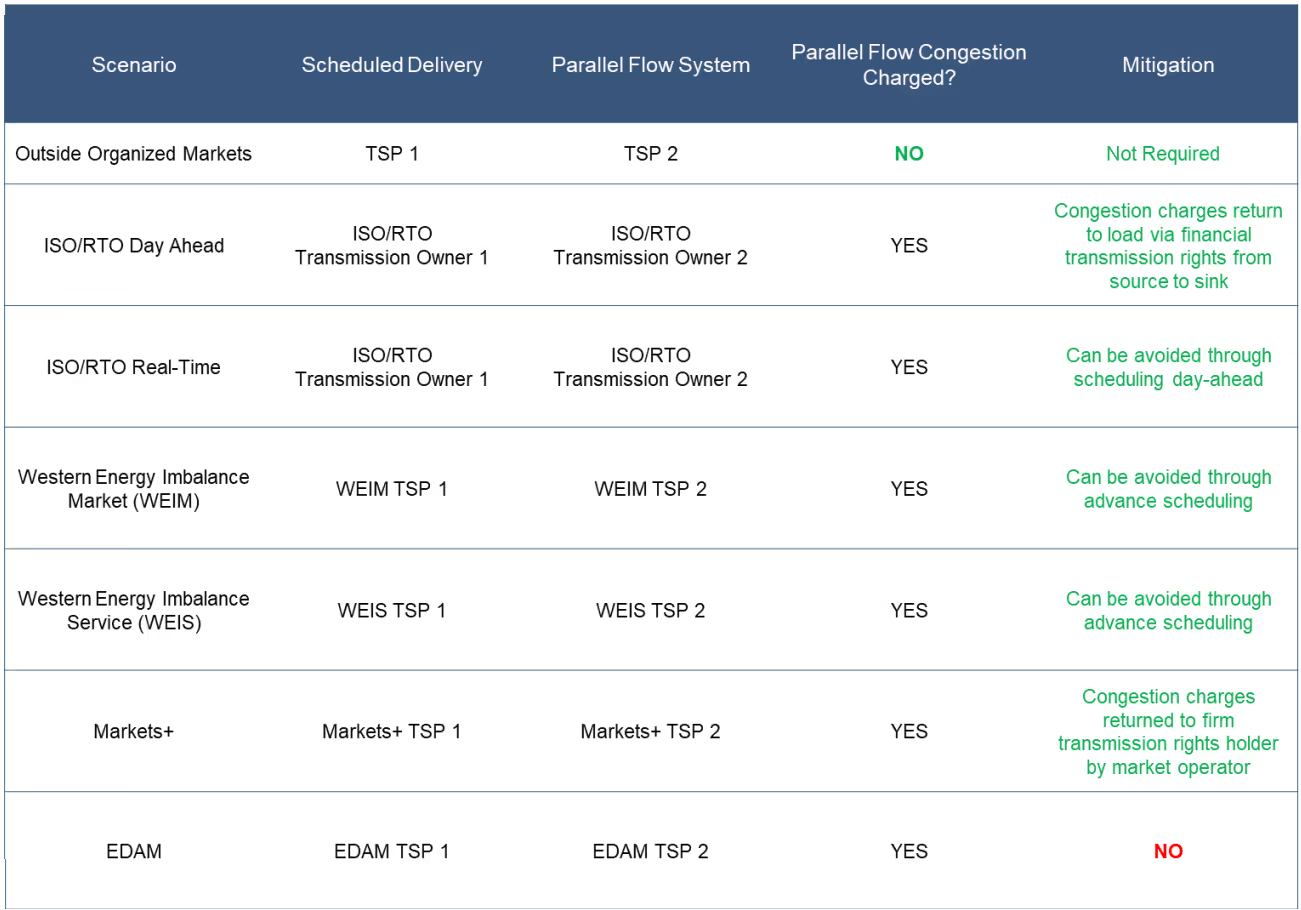
.png)

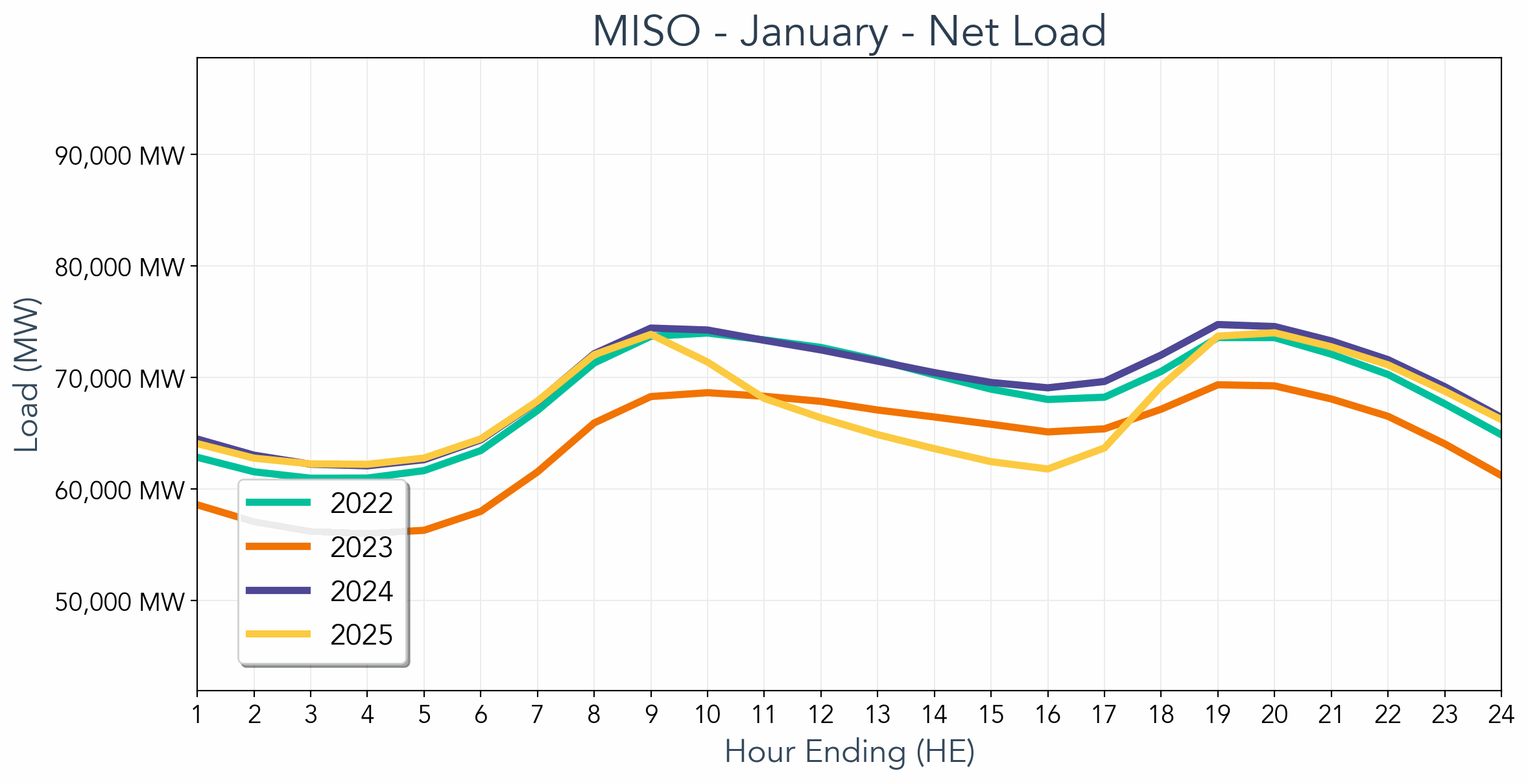

.avif)



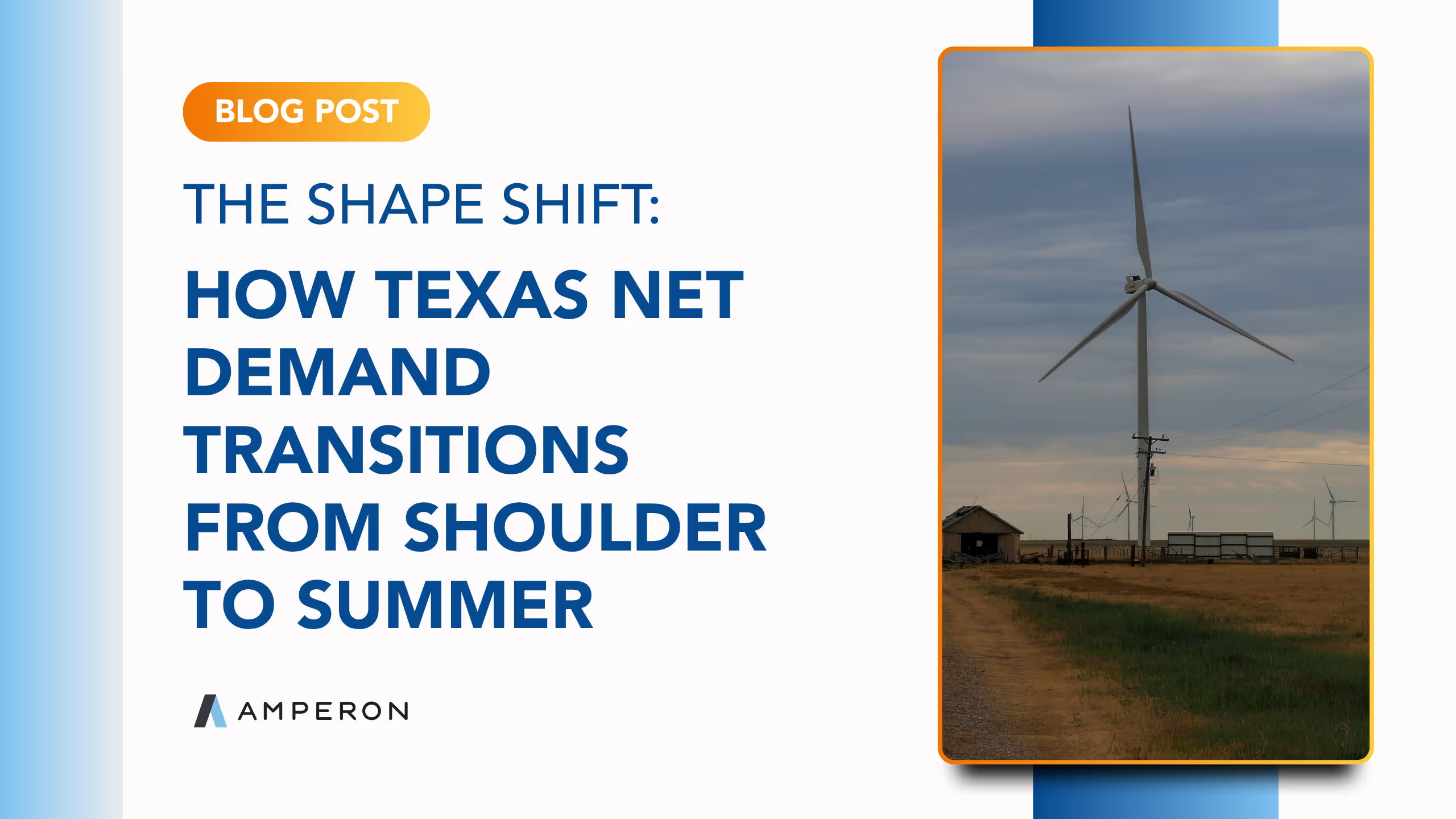
.avif)
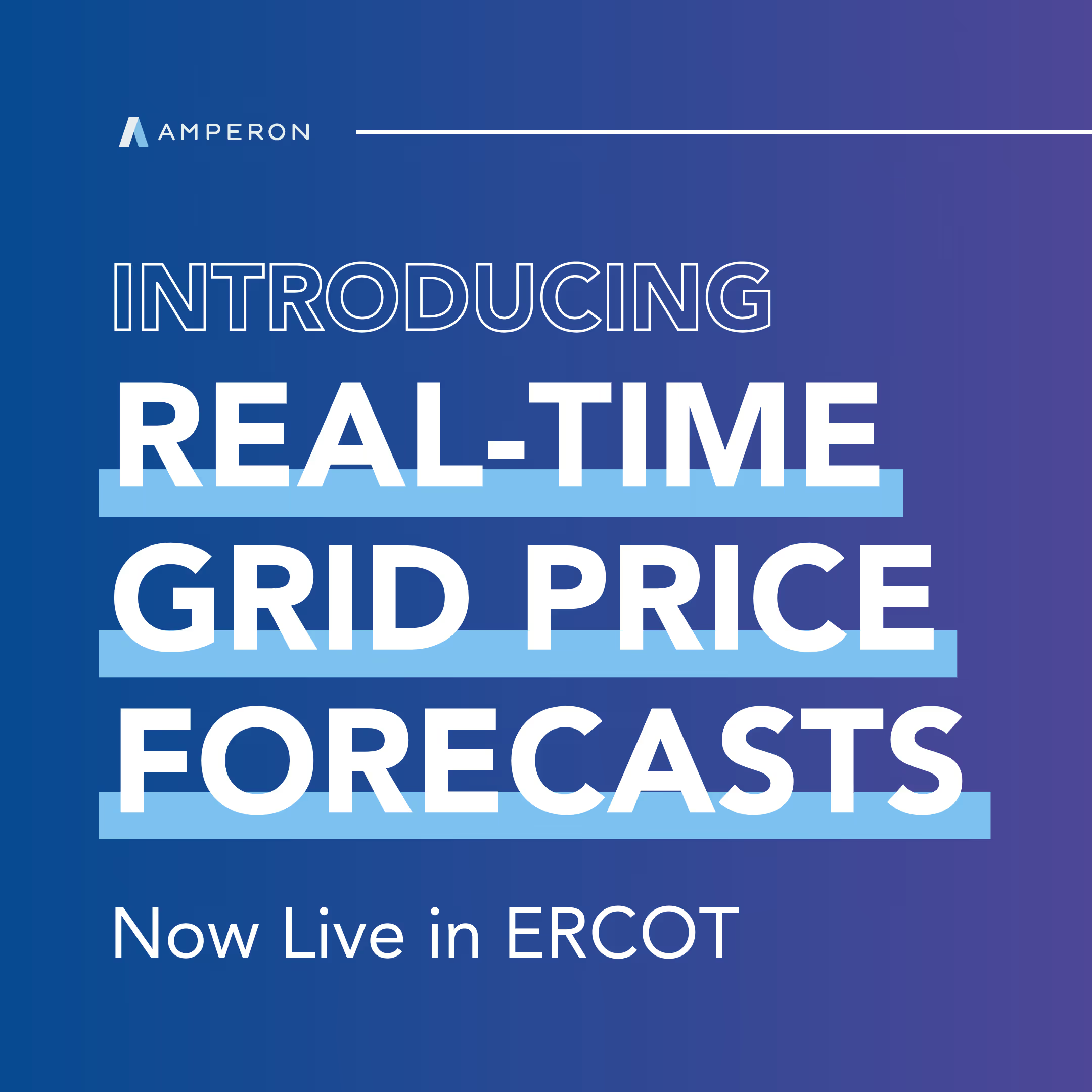
.avif)
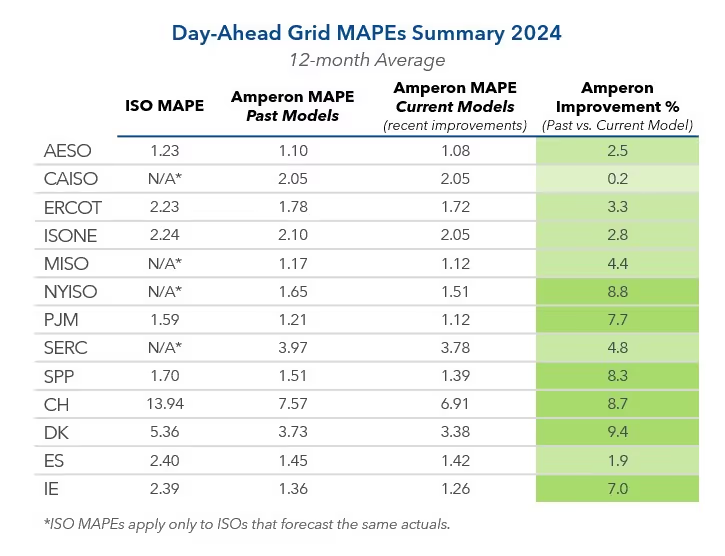

.avif)



.avif)
%20(15).avif)
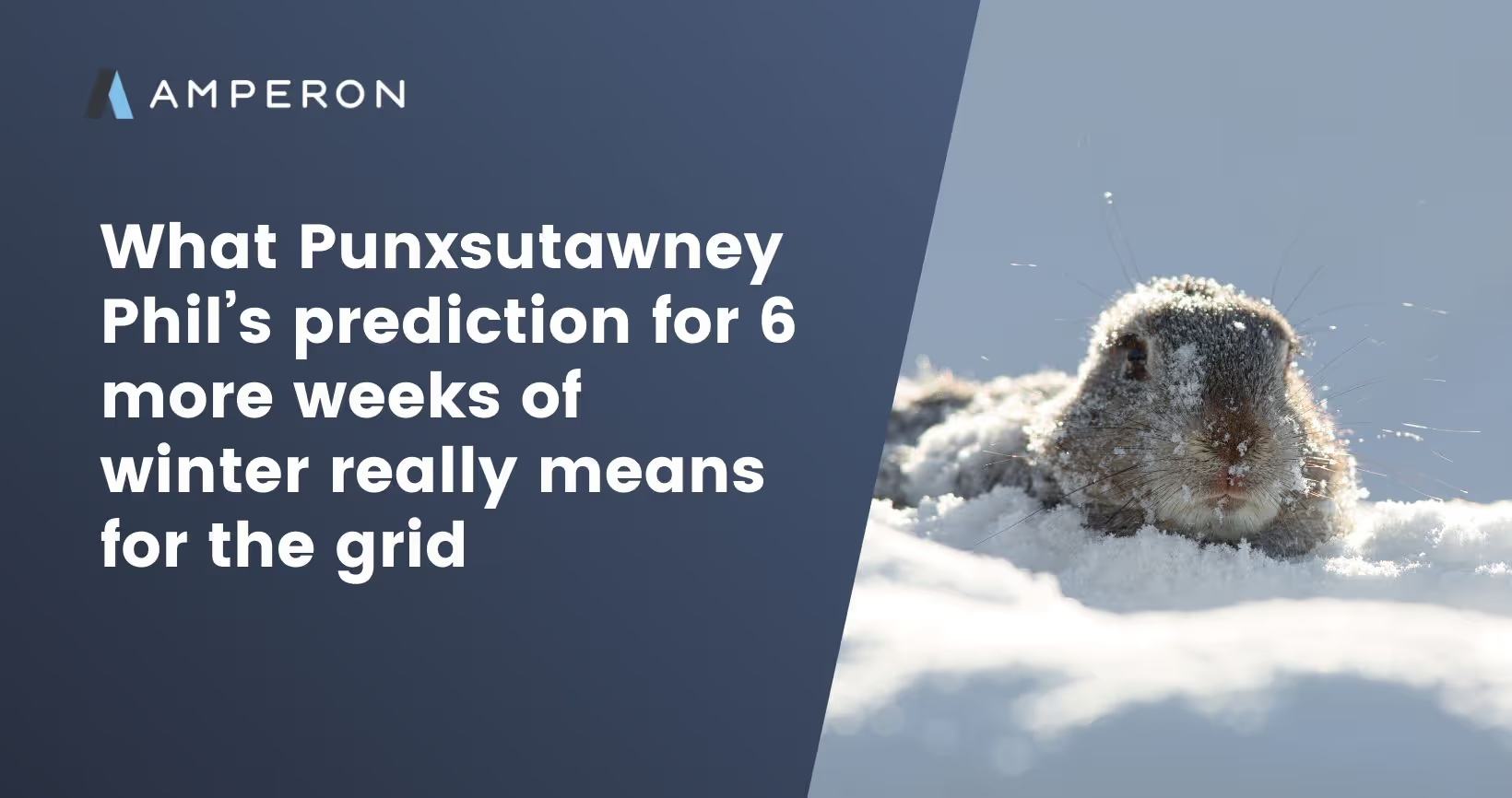
.avif)
%20(10).avif)

.avif)


.avif)

.avif)






.avif)



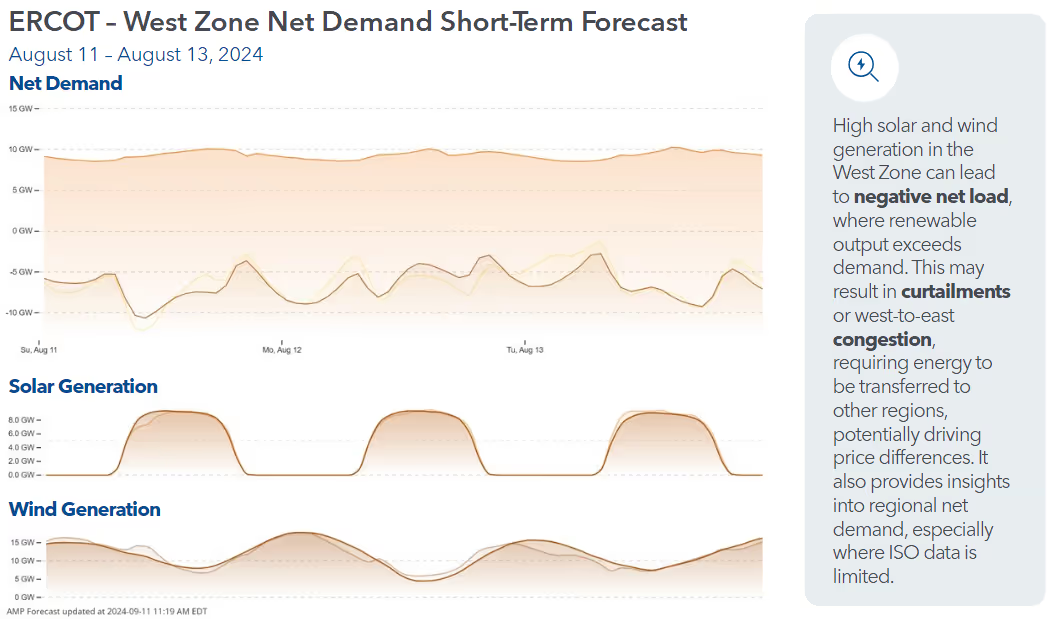





.avif)

.avif)





.avif)


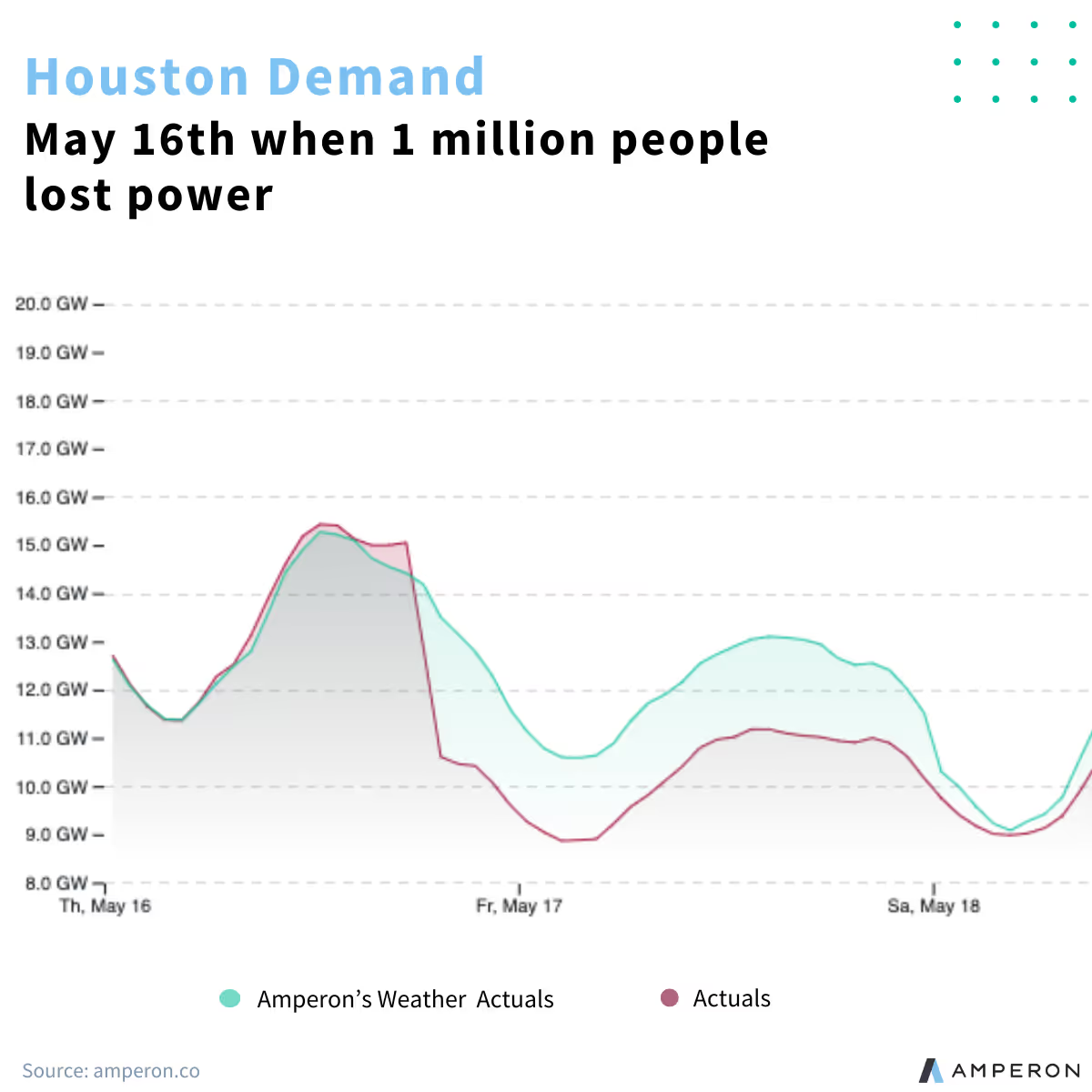


.avif)
.avif)



.avif)

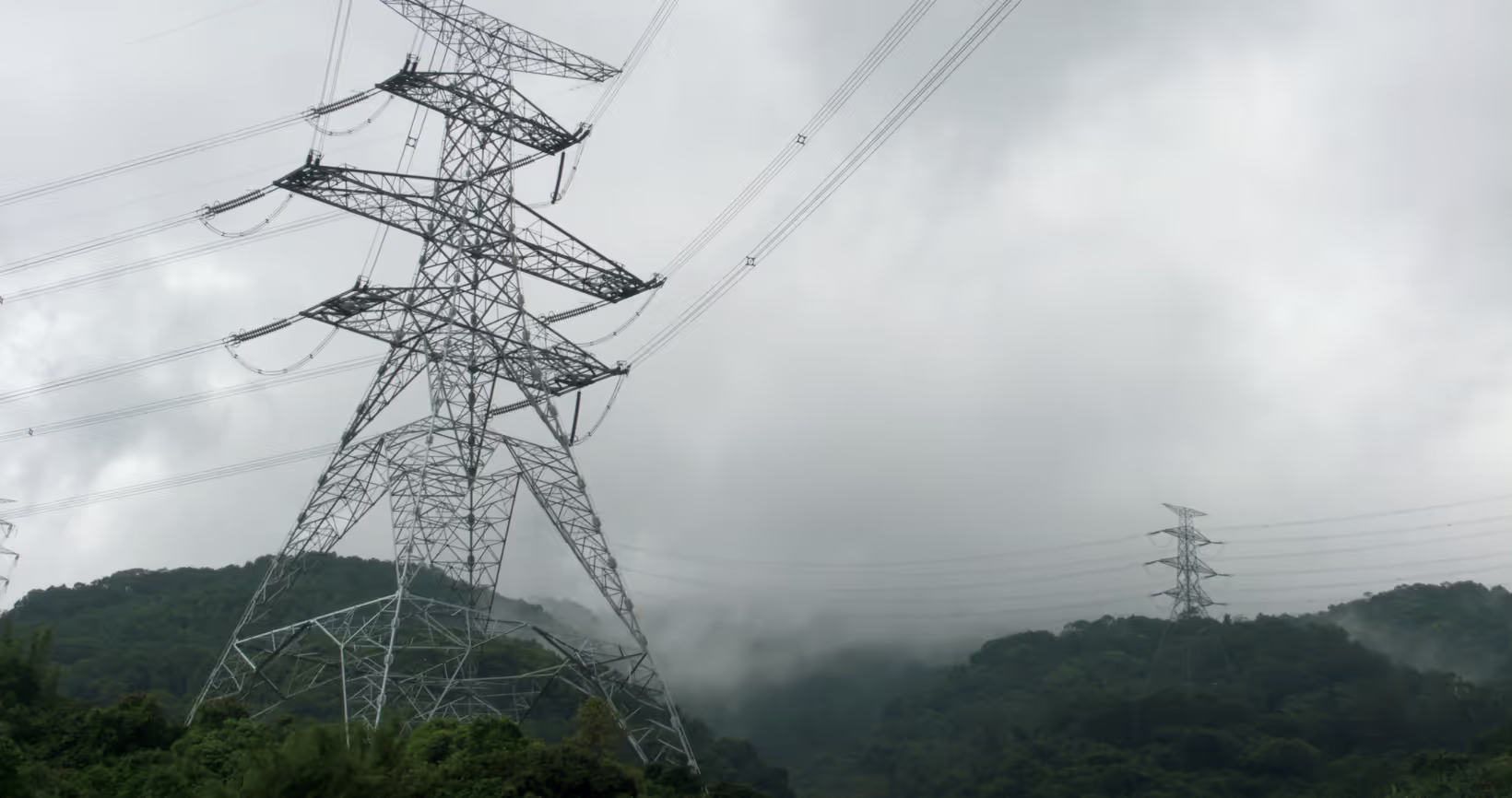


.avif)



.avif)
.avif)



